- info@aromantique.co.uk
- 07419 777 451
Available to purchase from most high street and online book outlets
ISBN: 978-1-0685013-0-2 (Print)
£15.99
This book aims to support you maintain your personal locus of control in terms of managing and nurturing health and wellbeing. Essential oils instigate significant physiological influence on the brain and central nervous system, the immune system and micro-biome, the endocrine system, and also, poignantly, they exhibit significant psycho-emotional-spiritual qualities that may ground, balance and uplift mood, improve memory and recall, and thus generally support mental health; perfect travelling companions. Gifts of nature, essential oils (resins and herbs) feature in many traditional ancient, and modern, medicinal and spiritual canons, including the Bible, and other scriptures. As you will discover in the following pages, essential oils, alongside other related remedial strategies and ancient wisdoms (for there is no such thing as one cure-all strategy), can ease the symptoms of anxiety (and accompanying co-morbidities, such as depression, insomnia, fear and grief), potentially subtly softening the broken jagged edges, while healing takes place.
For ease of reading and information retrieval, the following content is divided into two sections and twenty-three short chapters. Section One, Walking with Anxiety, explores what anxiety is, its cause and consequence and ways to determine, manage and alleviate symptoms. Section Two, Applying Essential Oils, explains the multiple dynamical properties and qualities of essential oils and identifies remedial psycho-emotional-spiritual indications for sixty individual essential oils, including their associated traditional energetic and subtle elements, that will assist you to hone and individualise selection of the most pertinent oil, or oils, in accord with your specific need or requirement.
“Over the recent ten years, there has been a growing emphasis in the mental health profession on the importance of encouraging a healthy lifestyle alongside medical care. This is coupled with the recognition of the value of promoting self-care, resilience and empowerment as safe, effective and cost-effective approaches to be integrated into individualised treatment for depression and associated anxiety disorders. Integration is indeed the key to success and aromatherapy beautifully and safely complements standard psychiatric care practices.
This text by Heather Dawn Godfrey is therefore very timely. Heather is well placed to write on this topic. As with her previous publications, through her well researched information and easily accessible writing style, she guides and enables the general reader to take positive, pragmatic, doable steps towards improving their own mental health. Through her longstanding experience as therapist, educator and award-winning author, Heather provides simple tools and strategies for priming and maintaining an inner locus of balance and control.”
Rhiannon Lewis, editor of the International Journal of Clinical Aromatherapy
“This book is an illuminating exploration of aromatherapy! I felt as though I’d been invited into a realm where the essence of nature meets the intricate workings of our mind, body, and spirit. Heather is clearly an alchemist and has a profound understanding of the power of essential oils and the transformative potential they hold within every drop.”
Janey Lee Grace, author and broadcaster
“In these challenging times where many people suffer from anxiety and stress, this book stands as a beacon of hope and resilience, offering a scientifically grounded and empathetic approach to mental wellbeing. The author skillfully combines research with practical applications, demonstrating the significant physiological and psychological benefits of essential oils on the brain, central nervous system, immune system, and endocrine system. Through the author’s authentic narratives of personal loss and vulnerability, the book guides readers towards reclaiming control and balance. Supported by evidence, it explores how these natural remedies can alleviate symptoms of anxiety, depression, insomnia, and grief. This work is an invaluable resource for practitioners and individuals seeking evidence-based methods to enhance overall wellbeing and resilience, reminding us of our capacity for growth and transformation.”
Emma-Jane Loveridge, health expert and author
Discover the transformative power of essential oils in this timely enlightening guide that blends ancient wisdom with modern science. Harness the power within you and the natural world to gracefully and resiliently overcome life’s challenges.
Sue Stone, Author, TV Presenter, and Transformational Leader of the Sue Stone Foundation
Enjoy.
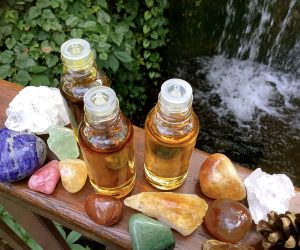 Heather Dawn Godfrey PGCE, BSc.
Heather Dawn Godfrey PGCE, BSc.
Author of: Essential Oils to Ease Anxiety, Healing with Essential Oils, Essential Oils for the Whole Body and Essential Oils for Mindfulness and Meditation.
AROMANTIQUE, 63a Silver Street, Lyme Regis, DT7 3HR
Relax. Revive. Rejuvenate. Replenish.
Bespoke Aromatherapy Massage applying high quality, soil association approved organic essential oils. Gift Vouchers available.
WELLBEING IN THE WORKPLACE
Offering in-house wellbeing services, subsidies or vouchers toward support is one simple, but very effective step toward improving morale, feelings of contentment and improved aptitude in the workplace. ‘Prevention is better than cure’ is a wise adage. Defusing feelings of stress and pressure nips mental and emotional disharmony in the bud; feelings of burnout, depression and anxiety – unwelcome guests – are, thus. tempered and kept at bay.
Aromatherapy is shown (**) to ease, and in some cases alleviate, feelings of depression, anxiety, low self-esteem, ‘burnout’ and feelings of mental and emotional exhaustion. Massage improves circulation, lowers and / or balances blood pressure, and relaxes, while also tones skin and muscle tissue. Essential oils have proven neurological influence, with positive effect on mood, emotion, memory and sense of wellness and wellbeing, among other things. Indeed, their molecules directly influence the limbic area within the brain, which in turn instigates activity of the parasympathetic nervous system. Alongside the relaxing influence of massage, their psycho-emotional regulating, calming, balancing and uplifting properties make essential oils ideal companions to have at-hand when dealing with life’s ‘ups and downs’. (Godfrey 2019, 2022)
MENTAL HEALTH: THE WIDER PICTURE
In 2022, the World Health Organization’s report “World Mental Health Report: Transforming Mental Health for All” highlighted the growing global need for improved care strategies in the area of mental health – a sector that is typically underfunded and currently inadequate to meet the acute and long-term needs of those suffering. What is more, with one in eight people living with a mental health disorder (13% of the global population) and with just 2% of health expenditure allocated to mental healthcare, this global public health burden is on track to further increase. (Lewis 2024, WHO 2022)
Indeed, according to the WHO, the last four years have seen a 25% increase in the prevalence of anxiety and depression. More than 1 in 7 UK adults say their mental health is either currently bad, or the worst it’s ever been. More women than men currently struggle with poor mental health: 18.5% of women, 12.5% of men. In 2023, NHS England spent £217.5 million on medication to treat anxiety and depression. (Forth With Life 2022).
It makes sense, therefore, to take integrative proactive steps to reduce, counter-balance or temper known triggers and causes of mental and emotional disharmony, and to include and engage positive preventative and supportive strategies that nip these ‘unwelcome guests’ in the bud before they creep in and spoil the party. Aromatherapy provides one such possible preventative solution.
You will find more about the remedial qualities and properties of essential oils in my books: Essential Oils to Ease Anxiety; Healing with Essential Oils; Essential Oils for the Whole Body; and, Essential Oils for Mindfulness and Meditation. Available to purchase or order from most high street book shops and on-line outlets.
References:
(**)
Psychophysiological Activity: With special reference to human electroencephalographic response. Scientia Pharmaceutica, National Library of Medicine. 84(4): 724-752. (2016).
two essential oils from Satureja genre and mindfulness meditation to reduce anxiety in
humans. Journal of Traditional and Complementary Medicine 7(1) https://www.researchgate.net/publication/304536506_Aromatherapy_with_two_essential_oils_from_Satureja_genre_and_mindfulness_meditation_to_reduce_anxiety_in_humans(2016).
Junior, Christiane do-Socorro and Ferraz Maia. Linalool as a Therapeutic and Medicinal Tool in Depression Treatment: A Review. Current Neuropharmacology, Bentham Science Publishers, 20(6): 1073-1092. https://www.ncbi.nlm.nih.gov/pmc/articles/PMC9886818/ (2022).
and Chang-geng Fu (2023) Essential oils for treating anxiety: a systematic review of randomised controlled trials and network meta-analysis. Frontiers in Public Health. https://www.ncbi.nlm.nih.gov/pmc/articles/PMC10267315/ (2023).
Pelargonium graveolens Essential Oil Alleviates Pain and related Anxiety and Stress in Patients with Lumber Spinal Stenosis and Moderate to Severe Pain. Pharmaceuticals (Basel). https://pubmed.ncbi.nlm.nih.gov/38275987/ (2023)
Effectiveness of lemon essential oil in reducing test anxiety in nursing student. Explore New York, Elsevier. https://pubmed.ncbi.nlm.nih.gov/35190270/ (2022).
Cerquin, Bertha Mirella Alfaro-Ttito and Elda Maritza Rodrigo-Villanueva. Anxiolytic Effect of Essential Oils Extracted from Lippia alba and Lippia citriodora. Pharmacognosy Journal 13, 6, 1377-1383. https://www.phcogj.com/article/1672 (2021).
Beiranvand. Effects of geranium aroma on anxiety among patients with acute
myocardial infarction: A triple-blind randomised clinical trial. Complementary Therapies in Clinical Practice p 201-206. https://pubmed.ncbi.nlm.nih.gov/29122262/ (2017).
Anxiety Relief in Adults under Mental Workload: A Randomised Controlled Trial. Evidence Based Complementary and Alternative Medicine. https://pubmed.ncbi.nlm.nih.gov/35449818/ (2022).
Yang. Action mechanism of roman chamomile in the treatment of anxiety disorder
based on network pharmacology. Journal of Food Biochemistry 45(1). https://pubmed.ncbi.nlm.nih.gov/33152801/ (2021).
of the past with bright future. Molecular Medicine Report, vol 3 issue 6 p 895-901.
https://www.ncbi.nlm.nih.gov/pmc/articles/PMC2995283/ (2011).
Mtiraoui, Hiroko Isoda and Saad Saguem. Rosemary Tea Consumption Alters
Peripheral Anxiety and Depression Biomarkers: A Pilot Study in Limited Healthy Volunteers. Journal of the American Nutrition Association 41(3): 240-249. https://pubmed.ncbi.nlm.nih.gov/33565922/ (2022).
Kellici, Grigoris Iatrou, Fontini N. Lamari, Andreas G. Tzakos and Marigoula Margarity. Rosemary tea consumption results to anxiolytic- and anti-depressant-like behaviour of adult male mice and inhibits all cerebral area and liver cholinesterase activity; phytochemical investigation and in silico studies. Chemico-Biological Interactions 237: 47-57. https://pubmed.ncbi.nlm.nih.gov/25910439/ (2015).
effect of lavender herbal tea on the anxiety and depression of the elderly: A randomised clinical trial. Complementary Therapies in Medicine vol 50. Elsevier. https://www.sciencedirect.com/science/article/abs/pii/S0965229919316292 (2020).
Hamedeyazdan, Mohammadali Torbati, Somalyeh Taheri-Tarighi, Mostafa Araj-Khodael and Majgan Mirghafourvand (2021) The effects of lemon balm (Melissa officinalis L.) on depression and anxiety in clinical trials: A systematic review and meta-analysis. Phytotherapy Research 35(12): 6690-6705. https://pubmed.ncbi.nlm.nih.gov/34449930/ (2021).
Pharmacological evaluation of Menthis spicata L. and Plantago major L., Medicinal Plants used to Treat Anxiety and Insomnia in Colombian Caribbean Coast. Evidence Based Complementary and Alternative Medicine. https://www.ncbi.nlm.nih.gov/pmc/articles/PMC6106973/ (2018).
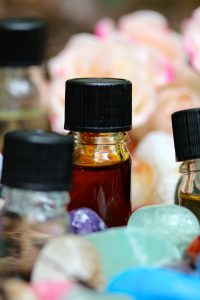 Heather Dawn Godfrey P.G.C.E., B.Sc. (Joint Hon)
Heather Dawn Godfrey P.G.C.E., B.Sc. (Joint Hon)
(Author of Essential Oils to Ease Anxiety, Healing with Essential Oils, Essential Oils for the Whole Body, and Essential Oils for Mindfulness and Meditation)
Gifts of nature, the healing qualities of plants range from physical to ethereal; we are inextricably connected to earths’ web of life.
….you who are born of the mountains and the forests and the sea can find their prayer in your heart. Kahlil Gibran
We share biological affinity with plants; simple examples being gaseous exchange and provision of vital nutrients that maintain and support bodily function, growth, tissue repair, energy production, and more.
In deed, healing plants and their essential oils have been used throughout history for their protective, restorative, rehabilitative, and hedonistic qualities, attributes observed and documented in ancient scriptures and medicinal texts and, more recently, affirmed in scientific journals and numerous research papers. (Godfrey 2022, 2019, 2018)
How essential oils support health and wellbeing
Perfume and incense bring joy to the heart. Proverbs 27:9
Essential oils are aromatic volatile terpene and terpenoid compounds, which are typically extracted from plants (herbs and trees, heart wood, bark, blossoms and flowers, fruits, leaves, stalks, seeds, roots, gums, and resins), mainly by steam distillation, or in the case of citrus fruits, by expression.
The process of extraction increases the concentration of essential oils, thus, their potency too; just one or two drops of essential oil is sufficient to procure significant effect. Applied as an aromatherapy treatment, their molecules are absorbed either via skin (administered in an emollient, such as vegetable oil, cream, lotion or ointment), or the respiratory system through inhalation of their vaporised droplets (applied, for example, via room diffusers, perfumes, or drops on a tissue, steam inhalation, and ‘aromasticks’); inhalation has a direct influence on the limbic (olfactory connection to the brain and neural pathways) and circulatory systems (absorption via alveoli capillaries and thence the organ systems). Certain essential oils are prescribed and administered by professional herbalists, doctors or pharmacists as medicine (contained in gel-like digestible capsules). (Godfrey 2022, 2019, 2018)
Essential oils develop within the plant during the secondary phase of metabolism (along with alkaloids, flavonoids, bitters and gums), a process instigated by photosynthesis. While not vital to the plants existence, essential oils play a significant role. For example, they stave infection, attract pollinators, repel predators, disarm invasive microbes, repair damaged tissue, and control and optimise the ambient environment (temperature and humidity) by creating a haze or mist, an auric vapour, which surrounds the plant (terpenes evaporate at high temperature, and consequently produce air flows that cool the plant and reduce transpiration). They relay messages from one part of the plant to another (thus, they are considered to be ‘hormone-like’), and to other plants in the immediate vicinity. (Godfrey 2022)
Similarly, essential oil molecules modulate various processes within the body. Their properties range across a spectrum, from immune support (anti-bacterial, anti-viral), tissue healing and regeneration, pain relieving, restorative, digestive, to psycho-somatic, revitalising, anti-anxiety, anti-depressant, uplifting, calming and grounding, and more. They are multi dynamic adaptogens (that is, they support the immune system and the body’s resilience to infection, disease and stress); they stimulate the limbic system (the emotional brain) to modulate mood and emotion, and stimulate hormone balance via the limbic systems connection to the pituitary gland. (Godfrey 2022, 2019, 2018)
Olfactory and endocannabinoid receptors
Some of these qualities are attributed, in part, to the affinity certain essential oil molecules (for example, beta-caryophyllene, a-pinene, limonene, linalool, eucalyptol and myrcene – see fig 1) share with the endocannabinoid system – hemp (from which cannabis is derived) contains cannabinoids, also volatile terpenes and phenolic compounds.
Olfactory receptors and endocannabinoid receptors are found scattered throughout the body in numerous organs and tissues (for example, the central nervous system, vascular system, lungs, gastrointestinal tract, reproductive organs, liver, spleen, brain stem, bones and skin). Endocannabinoid receptors are also found in the olfactory epithelium and the main olfactory bulb at the top of the nasal cavity, also the piriform cortex and other brain areas that process and code olfactory information.
Like the olfactory system, the endocannabinoid system plays a role in a range of functions and processes, which include sleep, mood, memory, learning, motor control, skin and nervous function, liver function, muscle formation and food intake, and interacts with the olfactory system to modulate processes such as odour sensitivity, olfactory learning and memory. However, the mechanisms by which endocannabinoid and olfactory receptors interconnect and interact are complex and still not completely realised; in deed, olfaction is an intricate process (see ‘scent detection and the olfactory system’ below).
Fig 1. Terpenes found in Hemp (Cannabis), CBD oil, and Essential Oils
beta-caryophyllene – activates CB2 (Cannabidiol) receptors which modulate immune cell function, pain relief and inflammation (also found in Black Pepper, Clove Bud, Melisa (Lemon Balm), and Ylang Ylang).
a-pinene – modulates pain relief and inflammation, promotes relaxation, aids memory and respiratory function, and supports the immune system (anti-oxidant and anti-infectious) (also found in Frankincense sacra, Cypress, Helichrysum (Immortelle), Juniper berry, Myrtle, Nutmeg, Pine, and Rosemary).
limonene – modulates the immune system, modulates inflammation, anti-tumour, eases bronchial conditions and soothes allergies (also found in Bergamot, Caraway, Grapefruit, Black Pepper, Bitter Orange, Lemon, Mandarin, and Palo Santo).
linalool – modulates pain relief and inflammation, supports the immune system (anti-infectious), protects the nervous system, eases anxiety and depression (also found in Basil linalool, Clary Sage, Coriander, Hyssop linalool, Lavender, Marjoram linalool, Neroli, Petitgrain, Thyme linalool, Ho Wood, and Ylang Ylang).
eucalyptol (1,8-cineole) – modulates inflammation and cytokine activity, supports the immune system (anti-oxidant, anti-infectious), eases chronic respiratory conditions and other chronic diseases (also found in Eucalyptus, Cajeput, Caraway, Ginger, Hyssop officinalis, Spike Lavender, Myrtle, Niaouli, Rosemary, Spanish Sage, and Tea Tree).
myrcene – supports the immune system (anti-oxidant, anti-infectious), eases neurological conditions (such as dystonia, epilepsy and Parkinson’s disease), and promotes relaxation (also found in Rosemary, Juniper Berry, Frankincense sacra, Lemongrass, and Yarrow).
(See my book Healing with Essential Oils to discover more about the chemical constituents found in essential oils.)
The olfactory system and scent detection
Be like the flower, turn your face to the sun. Kahlil Gibran
Scent molecules (terpenes and terpenoids) are detected (like a key in a lock) by olfactory receptors located at the top of each nasal cavity that, in turn, relay nerve impulses to the Limbic System located in the brain. As previously observed, odour receptors are also located in other areas of the body, such as the skin and other organs (heart, liver, lungs, kidneys and gastrointestinal tract). However, by grand design, it seems, proximity of the master olfactory portal in the roof of the nasal cavity ensures immediate awareness and instinctive reflexive responses.
The Limbic System incorporates various functional structures located in the central paleomammalian area of the brain (which include the amygdala, hippocampus and hypothalamus) that are responsible for basic physiological and emotional responses to sensory stimulation. The hypothalamus functionally connects the Limbic System to the frontal lobe (where the brain rationalises and makes sense of information and sensory input) and to the pituitary gland. The pituitary gland, also known as the master endocrine gland, initiates hormone release in response to sensory signals, activating either the sympathetic or parasympathetic nervous system, depending on the nature of the stimuli; the sympathetic nervous system prepares the body for ‘fight or flight’ (protection), and the parasympathetic nervous system maintains a state of peace and relaxation (rest and digest), and disengages the sympathetic nervous system post ‘alert’, returning the body to its optimal functional resting state.
When inhaled, some essential oil molecules will cross the blood brain barrier (especially sesquiterpenes, which are found, for example, in frankincense, carrot seed, cedarwood, German chamomile, ginger, helichrysm, myrrh, black pepper, patchouli, spikenard, and ylang ylang) where they interact with various receptor sites, such as, GABA and glutamate receptors, located in the hippocampus, thalamus, basal ganglia, hypothalamus, and brainstem (GABA is an amino acid that functions to reduce neuronal excitability by inhibiting nerve transmission).
The mechanisms by which essential molecules are absorbed and interact within the body are very complex and, although modern technology affords much insight, are still not fully realised. However, our body is clearly ‘wired’ to receive phyto-molecules; verified by the presence of numerous (olfactory and endocannabinoid) receptor sites scattered throughout the body and the multilateral physical and psychosomatic responses instigated by detection.
(Godfrey 2022, 2019, 2018)
Healing with Essential Oils
Rose (Rosa centifolia/damascena) provides a lovely example of how diverse the action of essential oils can be. The qualities of rose range from hedonistic, aphrodisiac, anti-depressant, hypnotic, and anti-convulsive, to anti-oxidant, anti-inflammatory, analgesic, antitussive (relieves coughs), antibacterial, and bronchodilatory.
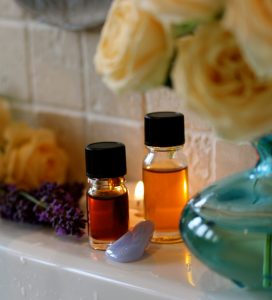 Some of the molecules found in rose oil are barely detectable yet these synergistically contribute significantly to its scent and therapeutic properties (synergy is not unique to rose oil as most essential oils demonstrate synergistic interaction between some or all of their constituents).
Some of the molecules found in rose oil are barely detectable yet these synergistically contribute significantly to its scent and therapeutic properties (synergy is not unique to rose oil as most essential oils demonstrate synergistic interaction between some or all of their constituents).
To illustrate, citronellol and geraniol, are predominant components found in rose essential oil, both of which exude floral, sweet, rose-like scents, yet the perfume of the complete essential oil is acknowledged as rich, intense, sweet, powerful beeswax-like, highly floral, rosy, with waxy, floral, spicy, green, metallic, body notes, then tenacious warm floral spicy dry out notes.
Floral, sweet, rose-like scents are also observed amongst constituent ‘notes’ in other essential oils that contain citronellol (for example geranium and citronella), and geraniol (for example, bergamot, palmarosa, thyme, and geranium). Each molecule comprising an essential oil contributes a unique ‘tone’ that combines with other molecules in various arrangements to create specific ‘tunes’ or ‘melodies’.
(Godfrey 2022)
That which we call a rose, by any other name would smell as sweet. Shakespeare, Romeo and Juliette
Lavender (Lavandula angustifolia) provides another illustration. Linalool and linalyl acetate are two predominant compounds found in this essential oil, collectively making up to 90% of lavenders chemical constituents.
The scent profile of linalool is described as citrus, floral, sweet, woody and green, and linalyl acteate, is described as sweet, green, floral and spicy, with a clean woody, terpy, citrus nuance.
Linalool is sedative, analgesic and anti-inflammatory, and also features in large quantity in other essential oils, such as, ho wood, rosewood, thyme (CT. linalool), marjoram (CT. linalool), and basil (CT. linalool).
Linalyl acetate is anti-inflammatory, sedative, relaxant and anti-hypertensive, and is present in high amount in Clary sage, petitgrain, rose, mints and bergamot FCF essential oils.
Lavender angustifolia’s overall therapeutic profile is, including those qualities mentioned above, anti-depressant, anti-microbial, antiseptic, anti-spasmodic, anti-toxic, anti-viral, bactericidal, cleansing, deodorant, hypotensive, skin healing and toning.
Spike Lavender (Lavandula latifolia), on the other hand, contains linalool and, in place of linalyl acetate, 1,8-Cineole (Eucalyptol) and a lesser amount of Camphor. 1,8-Cineole is expectorant, anti-inflammatory, antispasmodic and improves cerebral blood flow; its scent is ‘eucalyptus-like’. Camphor instigates vasodilation (dilates blood vessels and decreases blood pressure); its scent is fresh and warm. The overall scent profile of Spike Lavender thus differs from Lavender angustifolia and is accordingly described as eucalyptus, herbal, camphor, and medicinal.
These examples demonstrate how intricate and complex essential oils are. Each essential oil comprises a unique array of chemical constituents, the presence and quantity of which synergistically determine and distinguish that oils scent dynamic and therapeutic properties and qualities.
As previously established, essential oils are generally physically protective and restorative and psycho-emotionally vitalising, warming, grounding and calming. Their actions complement and gently support at one and the same time physical, mental and spiritual states.
In deed, the perception of scent instantly instigates a reflexive response within the brain that may inspire mood and emotion, compound and/or trigger memories, and conjure images – a blossoming garden in summer, woody earthy forests in spring, sweet citrus orchards in autumn, – or simply but significantly, instil feelings of peace and calm, of feeling bright and awake, and more.
The sensual experience of scent detection also draws attention to the moment, thus essential oils are wonderful companions for meditation, prayer and for moments when we simply want to centre our attention in the here and now. Thus, they are ideal companions to call upon when dealing with stress and stress related issues, including mild depression, anxiety, feelings of loss and grief, or to journey with through change and transition, or simply to compound and celebrate wellness, wellbeing, a sense of contentment, and joyful events.
The sense of smell is very personal; what one person finds pleasant another person may dislike or feel indifferent toward. Using our own nose, however, we are usually able to detect which scent is good for us at a given moment.
The essential oils listed below are among those most frequently cited as being anti-depressant and anti-anxiety, uplifting and calming. These oils may also alleviate stress related conditions, such as, insomnia, headaches, and skin disorders (eczema, psoriasis and so on), and more.
Essential oils to harmonise mood and emotion
Bergamot
Cedarwood
Chamomile Roman
Citronella
Clary sage
Corriander
Frankincense
Geranium Rose
Grapefruit
Lavender
Lemon balm (Melissa)
Lemongrass
Marjoram
Neroli
Orange
Patchouli
Peppermint
Petitgrain
Rose
Rosemary
Sandalwood
Spikenard
Vetivert
Ylang Ylang
Applying essential oils
Remember, do not apply essential oils neat to your skin, but add one or two drops to an emollient, and do not take essential oils internally unless administered, prescribed and monitored by a professional healthcare practitioner.
Vaporising a few drops of essential oils in a room diffuser, or inhaling one or two drops on a tissue or from a nasal inhaler, or applied as a personal perfume infused in vegetable oil ( applied via massage or roller bottle) or cream, are all fun, safe and very effective ways to dispense essential oils in order to experience their scents and benefit from their physical and psycho-emotional gifts.
Self-massage is also a lovely way to apply essential oils (essential oil molecules penetrate the epidermis and find their way into the circulatory system). For example, add three to six drops of essential oil to a vegetable oil or non-perfumed lotion, and then apply, using a rhythmic motion (stroking or circular movements) to face, arms, hands, legs and feet – ideally after a bath or before bed.
Go to your fields and your gardens, and you shall learn that it is the pleasure of the bee to gather honey of the flower, but it is also the pleasure of the flower to yield its honey to the bee. For to the bee a flower is a fountain of life, and to the flower a bee is a messenger of love, and to both, bee and flower, the giving and the receiving of pleasure is a need and an ecstasy. Kahlil Gribran
You will find valuable insight, practical details and reference information about the various qualities of these and numerous other essential oils in my book Healing with Essential Oils, and my other books Essential Oils for the Whole Body and Essential Oils for Mindfulness and Meditation (published by Inner Traditions, Vermont USA and available to purchase from most high street or online book suppliers).
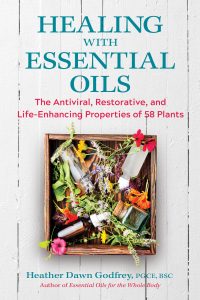
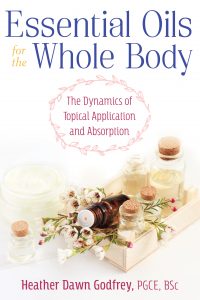
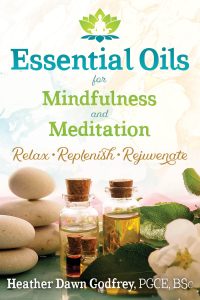
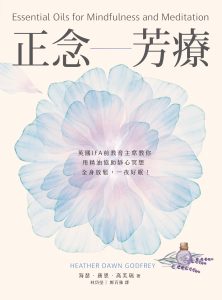
References
Agatonovic-Kustrin, S., Kustrin, E., Morton, D. W. (2019) Essential oils and functional herbs for healthy aging. National Library of Medicine. PubMed. Neural Regen Res. 14(3): 441-445. https://pubmed.ncbi.nlm.nih.gov/30539810/
Ali, B., Al-Wabel, N. A., Shams, S., Ahamad, A., Khan, A. A., Anwar, F. (2015) Essential oils used in aromatherapy: A systematic review. Asian Pacific Journal of Tropical Biomedicine, Elsevier volume 5 issue 8 p 601-616. https://cyberleninka.org/article/n/3650/viewer
Charmine, I. PhD, Oken, B. MD, PhD (2016) Aroma Effects on Physiologic and Cognitive Function Following Acute Stress: A Mechanism Investigation. Journal of Alternative and Complementary Medicine. 1; 22(9): 713-721. https://pubmed.ncbi.nlm.nih.gov/27355279/
Clarke, S. (2002) Essential Chemistry for Safe Aromatherapy. Churchill Livingstone. Harcourt Publishers, London
de Sousa, D. P. (2017) Essential Oils and Their Constituents: An Alternative Source for Novel Antidepressants. Molecules, 20(8): 1290. https://www.ncbi.nlm.nih.gov/pmc/articles/PMC6152054/
do Vale T.G., Furtado E.C., Santos Jr J. G., Viana G.S.B. (2002) Central effects of citral myrcene and limonene, constituents of essential oil chemotypes from Lippia alba (Mill.) n.e. Brown. NIH National Library of Medicine 9(8):709-14. https://pubmed.ncbi.nlm.nih.gov/12587690/
Ebrahimi, H., Mardani, M., Basirinezhed, M. H., Hamidzadeh, A. Eskandari, F. (2021) The effects of Lavender and Chamomile essential oil inhalation aromatherapy on depression, anxiety and stress in older community dwelling people: A randomized Controlled trail. Explore (NY). S1550-8307 (21)00001-X. https://pubmed.ncbi.nlm.nih.gov/33454232/
Emer, A. A., Donatello, N. N., Batisti, A. P., Belmonte, L. A. O., Santos, A. R. S., Martins, D. F. (2018) The role of the endocannabinoid system in the antihyperalgesic effect of Cedrus atlantica essential oils inhalation in a mouse model of postoperative pain. Journal of Ethnopharmacology, Elsevier, vol 210 p 477- 484 https://pubmed.ncbi.nlm.nih.gov/28917977/
Fung, T. K. H.; Lau, B. W. M.; Ngai, S. P. C.; Tsang, H. W. T. (2021) Therapeutic Effect and Mechanisms of Essential Oils in Mood Disorders: Interaction between the Nervous and Respiratory Systems. International Journal of Molecular Science 22(9): 4844
Gibran, K . (1980) The Prophet, Wlliam Heinmann, Pan Books. ISBN 0-330-26220-3
Godfrey, H. D. (2022) Healing with Essential Oils. Healing Arts Press, Rochester, Vermont USA
Godfrey, H. D. (2019) Essential Oils for the Whole Body. Healing Arts Press, Rochester, Vermont USA
Godfrey, H. D. (2018) Essential Oils for Mindfulness and Meditation. Healing Arts Press, Rochester, Vermont USA
Gupta, A., Coogler, G. (sourced June 2021) Traditional plants that engage the endocannabinoid system and their medicinal potential. Canna Foundation (Scientific studies and cannabis testing. https://www.fundacion-canna.es/en/traditional-plants-engage-endocannabinoid-system-and-their-medicinal-potential
Han, X., Gibson, J., Eggett, D. L., Parker, T. L. (2017) Bergamot (Citrus bergamia) Essential Oil Inhalation Improves Positive Feelings in the Waiting Room of a Mental Health Treatment Centre: A Pilot Study. DOI: 10.1002/ptr.5806. 31(5): 812-816. https://pubmed.ncbi.nlm.nih.gov/28337799/
Herz, R. (2016) The Role of Odour Evoked Memory in Psychological and Physiological Health. Brain Science vol 6(3). https://www.ncbi.nlm.nih.gov/pmc/articles/PMC5039451/
Hogratanaworakit, T (2009) The Relaxing effect of rose oil on humans. National Library of Medicine. PubMed. Nat Prod Commun. PMID: 19370942. 4(2):291- 6. https://pubmed.ncbi.nlm.nih.gov/19370942/
Johnson, S. A., Rodriguez, D., Allred, K. (2020) A Systematic Review of Essential Oils and the Endocannabinoid System: A Connection Worthy of Further Exploration. Hindawi Journals. Evidence-Based Complementary and Alternative Medicine.. Article ID 8035301. https://www.hindawi.com/journals/ecam/2020/8035301/
Lillehei, A. S., Halcon, L. L. (2013) A systematic review of the effect of inhaled essential oils on sleep. Journal of Alternative and Complementary Medicine. DOI: 10.1089/acm.2013.0311. 20(6): 441-51. https://pubmed.ncbi.nlm.nih.gov/24720812/
Lizarraga-Valderrama, L. (2021) Effects of essential oils on central nervous system: Focus on mental health. Phytotherapy Research. DOI: 10.1002/ptr.6854. 35(2): 657-679. https://onlinelibrary.wiley.com/doi/full/10.1002/ptr.6854
Maleki, N. A., Maleki, S. A., Bekhradi, R. (2013) Suppressive Effects of Rosa Damascena Essential Oil on Naloxone-Precipitated Morphine Withdrawal Signs in Male Mice. Iran Journal of Pharmaceutical Research. PMCID: PMC3813277. https://pubmed.ncbi.nlm.nih.gov/24250642/
Olofsson, J. K., Ekstrom, I., Lindstrom, J., Syrjanen, E., Stigsdotter-Neely, A., Nyberg, L, Jonnson, Sara, Larsson, M. (2020) Smell-Based Memory Training: Evidence of Olfactory Learning and Transfer to the Visual Domain. Chemical Senses, Oxford Academic volume 45 issue 7 p 593-600. https://academic.oup.com/chemse/article/45/7/593/5869423
Peana, A. T., D’Aquila, P. S., Panin, F., Serra, G., Pippia, P., Moretti, M. D. L. (2002) Anti-Inflammatory activity of linalool and linalyl acetate constituents of essential oils. Phytomedicine. National Library of Medicine. PubMed 9(8): 721-6. https://pubmed.ncbi.nlm.nih.gov/12587692/
Pereira I., Severino P., Santos A.C., Silva A.M., Souto E.B. (2018) Linalool bioactive properties and potential applicability in drug delivery systems. Colloids and Surfaces B Biointerfaces 171:566-578. NIH National Library of Medicine https://pubmed.ncbi.nlm.nih.gov/30098535/
Salehi B., Upadhyay S., Orhan I.E. Jugran A.K., Jayaweera S.L.D., Dias D.A., Sharopov F., Taheri Y., Martins N., Baghalpour N., Cho W.C. Sharifi-Rad J. (2019) Therapeutic Potential of a- and B-Pinene: A Miracle Gift of Nature. Biomolecules NIH National Library of Medicine 9(11): 738 https://www.ncbi.nlm.nih.gov/pmc/articles/PMC6920849/
Sanchez-Vidana, D. I., Ngai, S., P-C, Chow, J. K-W Chow, Lau, B. W-M, Tsoan, H. W-H (2017) The Effectivess of Aromatherapy for Depressive Symptoms: A Systematic Review. Evidence Based Complementary and Alternative Medicine. 5869315. https://www.hindawi.com/journals/ecam/2017/5869315/
Soel G.H., Kim K.Y. (2016) Eucalyptol and its role in chronic diseases. Advances in Experimental Medicine and Biology. NIH National Library of Medicine 929:389-398 https://pubmed.ncbi.nlm.nih.gov/27771935/
Setzer, W. N. (2009) Essential Oils and anxiolytic aromatherapy. Sage Publications, Journal of Natural Product Communications vol 4 no 9 p 1305- 1316.
Terral, G., Marsicano, G., Grandes, P., Soria-Gomez, E. (2020) Cannabinoid Control of Olfactory Processes: The where it matters. PMC7230191. Genes (Basal) 11(4): 431. https://www.ncbi.nlm.nih.gov/pmc/articles/PMC7230191/
The Good Scents Company (accessed July 2021) http://www.thegoodscentscompany.com/data/rw1007872.html
Tisserand, R., Young, R. (2014) Essential Oil Safety 2nd ed. Churchill Livingstone, Elsevier, London
Turcotte C., Blanchet M-R, Laviolette M., Flamand N. (2016) The CB2 receptor and its role as a regulator of inflammation. Springer Cellular and Molecular Life Sciences 73(23): 4449-4470 https://www.ncbi.nlm.nih.gov/pmc/articles/PMC5075023/
Yu L., Yan J., Sun Z. (2017) D-limonene exhibits anti-inflammatory and antioxidant properties in an ulcerative colitis rat model via regulation of iNOS, COX-2, PGE2 and ERK signalling pathways. Molecular Medicine Reports. Spandidos Publications 6241 p 2339-2346 https://www.spandidos-publications.com/mmr/15/4/2339

Heather Dawn: Godfrey. P.G.C.E., B.Sc. (Joint Hon)
Author of Essential Oils to Ease Anxiety, Healing with Essential Oils, Essential Oils for the Whole Body, and Essential Oils for Mindfulness and Meditation, published by Healing Arts Press, Inner Traditions USA.
We are surrounded by viruses and other microbes with which we share a symbiotic and, mostly, healthy and supportive relationship. Some microbes are pathogenic, and some become pathogenic if they proliferate without being kept in check. A healthy immune system works in collaboration with viruses and microbes to maintain internal equilibrium and resilience.
COVID-19 is a novel virus with mild to severe symptoms. In most cases people are not even aware they are infected; between 80 and 95% of those infected (depending on their background health) experience no symptoms or mild ‘flu-like symptoms and recover without ill effect. Some people, particularly the very elderly and people who have underlying serious or chronic co-morbidities, experience severe or acute symptoms (a chronic cough, chest tightness, shortness of breath, cognitive dysfunction and extreme fatigue), which may last five to seven days; these symptoms may linger for up to twelve weeks, or even longer in some cases (Post COVID-19 Syndrome).
One of the less severe, but none-the-less distressing, symptoms of COVID-type infection is loss of the sense of smell. Recent research indicates that essential oils have a significant role to play as aids to recovery of viral initiated loss of sense of smell.
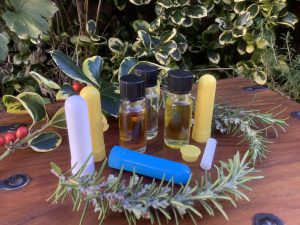 While viral infection may ‘take down’ the ability of olfactory neurons to register scent molecules, some scent molecules can still traverse the epithelium and directly enter the brain. Smelling a scent may evoke memories, feelings and sensations, and inspire imagination, in a way that may begin to re-awaken or stimulate olfactory neural pathways. At the same time, essential oil molecules may also aid tissue regeneration and repair the olfactory epithelium.
While viral infection may ‘take down’ the ability of olfactory neurons to register scent molecules, some scent molecules can still traverse the epithelium and directly enter the brain. Smelling a scent may evoke memories, feelings and sensations, and inspire imagination, in a way that may begin to re-awaken or stimulate olfactory neural pathways. At the same time, essential oil molecules may also aid tissue regeneration and repair the olfactory epithelium.
Putting this to the test, four essential oils (clove, eucalyptus globulus, lemon and rose) were selected for ‘smell training’ exercises. (Hopkins 2021, Hummel 2018, 2009) Between them, these oils express a diverse and complex range of scent nuances, while each essential oil also exudes its own unique and distinctive odour quality. These chosen scents also express odour qualities that correlate with three of the four basic tastes (sweet, bitter and sour). Forty five per cent of smell training participants regained their sense of smell.
Along with their sensual qualities and tissue healing properties, these oils also demonstrate anti-viral and anti microbial qualities, and various psycho-emotional qualities, that may alleviate other post-viral symptoms of COVID-19, such as fatigue, depression, and lack of concentration, while also staving residual infection and averting further viral spread.
To learn more about viruses, essential oils that may support olfactory rehabilitation and/or may alleviate other related conditions or co-morbidites, please refer to my full article here.
Please refer to my books for information about the individual properties and qualities of essential oils, and how to apply them safely and effectively: Essential Oils to Ease Anxiety, Healing with Essential Oils, Essential Oils for the Whole Body, and Essential Oils for Mindfulness and Meditation, published by Healing Arts Press, Inner Traditions USA.
References
Hopkins, C. Prof. (8th January 2021) Hope for recovery for loss of smell for COVID patients. Sky News Interview https://www.facebook.com/watch/?v=857906648400464
Hummel, T. (2018) A simple flu, and simple infection: how effective is smell training at curing infection? BCC News interview. https://www.bbc.co.uk/news/av/science-environment-46386497
Hummel, T., Rissom, K., Redden, J., Hahner, A.,Weidenbecher, M., Huttenbrink, K-B. (2009) Effects of Olfactory Training in Patients with Olfactory Loss. Laryngoscope. https://onlinelibrary.wiley.com/doi/abs/10.1002/lary.20101

 Heather Dawn Godfrey PGCE, BSc, FIFA, MFHT
Heather Dawn Godfrey PGCE, BSc, FIFA, MFHT
(Author of Essential Oils to Ease Anxiety, Healing with Essential Oils, Essential Oils for the Whole Body, and Essential Oils for Mindfulness and Meditation)
Published in The International Therapist, the quarterly journal of the Federation of Holistic Therapist (Autumn edition, October 2024)
A hundred years or so ago we grew and consumed vegetables, fruits, herbs and plants native to our local vicinity. Today, the world has opened up to us and we appear to live in a global village – so much of what we consume is sourced from the ‘four corners’ of the earth. Plants we once ate seasonally are now available to us all year round, along with others that do not naturally grow in our locality. It is, indeed, wonderful to have access to the wide variety of foods and products this global outreach affords; there are many advantages yielded by this scoping choice.
I sometimes wonder, though, whether focusing further ‘afield’ to satisfy our needs (and desires), ‘are we less tuned into, less aware of, less responsive to the nuances of our environment and in turn, less conscious of our internal adaptive needs?’ Twenty-four-hour access to the internet means we can consume (goods, media, information), trade and communicate virtually without limit. Our daily activity, naturally signalled by local environmental light-dark cycles, is extended by this facility and by artificial light; ‘day-time’ now blurs across the edges of night-time; our signalling mechanisms are artificially distorted; our natural boundaries and limits are increasingly less distinguishable; our natural innate connection with, awareness of and responsiveness to our local environmental conditions and natural nuances, insidiously jarred.
Our lives are increasingly orientated ‘in doors’ – in offices, shopping centres, schools and other institutional work, leisure and domestic environments, vehicle bubbles, and so on. We may go ‘outside’ for orchestrated walks or engage in healthy activities and sports, but our connection with and focus on our natural environment is curtailed and overshadowed by time limits and constraints, the pressure of abstract goals and measures; we snatch moments for ourselves ‘in-between’.
Yet, just like plants and every living creature around us, we function in intimate relationship with our immediate natural environment, we are swayed within its rhythm, flux and flow. Consciously or sub-consciously, we are responsive to temperature, atmosphere, precipitation, available sunlight, oxygen, nitrogen and carbon dioxide required to facilitate photosynthesis vital for metabolic alchemy, growth and repair. We appear to be at odds, juggling synthetic with natural, on the one hand making progress on the other divorcing ourselves from our natural state of ‘being’; increasingly out-of-sync, out-of-sorts, out-of-wellness.
One simple but naturally effective rebalancing step that may enable us to retune and realign with our innate inner and external environmental synchronicity and harmony, is to refocus on, reconnect and recalibrate with our natural circadian rhythms. Another rebalancing step, to eat and consume seasonal (preferably organic) available nutritionally rich locally grown foods – a very simple example of calibrating with food is that we naturally eat cooling and moisturising foods in summer, and warming and drying foods in winter. Foods, herbs and plant medicines that grow and are seasonally available in our own regions complement our body’s functional need to optimally adapt to local conditions and demands. For example, UK winter vegetables continue to provide vital vitamin C (along with other minerals and nutrients) during cooler light-limited days. Vitamin C supports the immune system by stimulating white blood cells. Vitamin D helps modulate the adaptive and innate immune system and is naturally synthesised, therefore made readily available, during ‘outside’ exposure to natural sunlight, particularly during long summer light-rich days, even when cloudy. Mushrooms, which are foraged during winter, contain vitamin D, so does oily fish. Winter vegetables grown in the UK that contain vitamin C include broccoli, Brussel sprouts, cabbage, cauliflower, kale, leeks, parsnips, carrots, turnips and potatoes. Thus, nature provides counterbalancing-antidotes to offset the shorter light-deprived days and forbidding weather of winter.
Essential oil yielding plants that grow locally here in the UK, similarly, provide complementary remedies that are naturally attuned to our needs as we travel through, navigate and adjust to local shifting seasonal landscapes and changing conditions. Acknowledging the scent of an essential oil, we are reminded of nature, we are also drawn into the moment (hence essential oils are invaluable meditation aids). Examples of UK derived essential oils include, among others:
Angelica root (Angelica archangelica), Chamomile German (Matricaria recutita), Chamomile Roman (Chamaemelum nobile), Helichrysum (Helichrysum angustifolium, H. italicum), Lavender English (Lavandula angustifolia), Lavandin (Lavandula latifolia), Lemon balm (melissa) (Melissa officinalis), Peppermint (Mentha x piperita), Rosemary (Rosmarinus officinalis), Sage (Salvia officinalis), Clary sage (Salvia sclarea), and Thyme (Thymus vulgaris)
Collectively, these essential oils cover a wide range of supportive properties – a veritable apothecary. Most of these oils are harvested and distilled during summer and autumn, yet their qualities offer assistance throughout the seasons; sunshine on a rainy day. Thus, it makes perfect sense to feature locally sourced essential oils in your repertoire. Locally sourced essential oils are also fresher. Equally, when we support local farmers, growers and distillers, we also support, benefit, and strengthen local community self-sufficiency and resilience.
Remember to check out the qualities, properties and safety data information of an essential oil before applying it. Essential oils complement other integrated health care modalities. It is important to select the modality that appropriately supports your condition or situation at a given time and to seek professional healthcare advice if you are persistently unwell and/or require professional diagnostic clarity.
 You will find information in my books, Healing with Essential Oils, Essential Oils for the Whole Body, and Essential Oils for Mindfulness and Meditation (published by Healing Arts Press, Inner Traditions, USA), about the safe use and appropriate application of essential oils, their dynamical properties, how to create effective blends and remedies, and much more.
You will find information in my books, Healing with Essential Oils, Essential Oils for the Whole Body, and Essential Oils for Mindfulness and Meditation (published by Healing Arts Press, Inner Traditions, USA), about the safe use and appropriate application of essential oils, their dynamical properties, how to create effective blends and remedies, and much more.
The dynamical qualities of UK grown and distilled essential oils
Angelica root Angelica archangelica. Harvested during either autumn or early spring. Roots and rhizomes
Immune system support: Anti-microbial properties: medium to strong. Colds and influenza.
Psycho-emotional and spiritual support: Eases nervous tension and fatigue; eases feelings of anxiety; eases migraines and headaches; promotes feelings of balance and strength; eases ‘heartache’ and instils a sense of courage.
Chamomile Roman Chamaemelum nobile. Harvested during summer. Flowering heads.
Immune system support: Anti-microbial properties: medium. Supports immune function.
Chamomile German Matricaria recutita. Harvested during summer. Flowering heads
Immune system support: Anti-microbial properties: medium to strong. Immune stimulant.
Psycho-emotional and spiritual support: Mental sedative (calms an active mind); emotional sedative; nervous system sedative; eases mood swings; calms fear, impatience, irritability, intolerance, hyperactivity, and hypersensitivity; eases agitation, anger, anxiety, depression and low mood; eases panic attacks; eases solar plexus tension; eases stress and stress-related conditions; eases headache and migraine; aids sleep.
Helichrysum Helichrysum angustifolium, H. italicum. Harvested during summer and early autumn. Fresh flowers
Immune system support: Anti-microbial properties: medium to strong. Allergies, bacterial and viral infection (herpes).
Psycho-emotional and spiritual support: Aid’s ability to let go of the past and move on; eases feelings of depression and low mood, mental and emotional debility, burnout and nervous exhaustion; relieves headaches (especially those caused by liver congestion); relieves shock; eases stress and stress-related conditions; good for meditation.
Lavender English Lavandula angustifolia. Lavender Spike L. latifolia. Harvested during early summer.
Flowering tops.
Immune system support: Anti-microbial properties: medium to strong. Immune stimulant (Spike). Immune support (English). Chronic fatigue syndrome, myalgic encephalomyelitis. Colds and ‘flu. Respiratory infection.
Psycho-emotional and spiritual support: Central nervous system sedative (sedative at low dose, stimulant at high dose); eases panic attacks; eases feelings of agitation, anger, anxiety, depression and low mood, grief, bereavement and loss, feelings of hopelessness, irritability, intolerance and impatience, nervous tension and premenstrual tension; eases insomnia; eases feelings of shock and solar plexus tension; eases stress and stress-related conditions.
Lemon balm (melissa) Melissa officinalis. Harvested during late summer. Leaves and flowering tops.
Immune system support: Anti-microbial properties: extra strong. Colds and ‘flu. Respiratory infection. Infectious skin conditions.
Psycho-emotional and spiritual support: Raises the spirits; uplifting; tonic; strengthens memory; calming; eases feelings of anxiety, depression and low mood, fear and shock, grief, bereavement and loss; eases feelings of nervousness and hypertension; eases insomnia.
Peppermint Mentha x piperita. Harvested during early summer and early autumn. Leaves.
Immune system support: Anti-microbial properties: strong. Colds and ‘flu. Respiratory infection.
Psycho-emotional and spiritual support: Eases breathing; refreshing and invigorating; awakening; sedative and calming in low dose; eases panic attacks; eases depression and low mood; calms racing thoughts and mental chatter; improves concentration; aids memory loss; eases mental fatigue and exhaustion; eases nervous tension; eases stress and stress related conditions.
Rosemary Rosmarinus officinalis. Harvested during summer. Flowering tops.
Immune system support: Anti-microbial properties: strong. Colds and ‘flu. Respiratory infection.
Psycho-emotional and spiritual support: Restorative; stimulating; tonic; enlivens the brain and clears head; aids memory; aphrodisiac; eases depression and low mood; eases debility, lethargy, mental fatigue and nervous exhaustion; eases headaches and migraine; aids in opening the throat chakra and finding your voice.
Clary Sage Salvia sclarea. Harvested during late spring and summer. Flowering tops.
Immune system support: Anti-microbial properties: Medium to strong. Colds and ‘flu.
Psycho-emotional and spiritual support: Sedative; mildly intoxicating (potentiated by alcohol); euphoric; aphrodisiac; bracing during difficult times; eases anxiety, depression and low mood; relieves nervous tension and fatigue; eases migraine and headache.
Sage Salvia officinalis. Harvested during late spring and summer. Dried leaves
Immune system support: Anti-microbial properties: Medium. Coughs, colds and ‘flu.
Psycho-emotional and spiritual support: Headaches, nervous exhaustion and fatigue; stress related conditions; eases tiredness, depression and feelings of grief and loss; aids memory.
Thyme Thymus vulgaris. Harvested during spring and early summer. Flowering tops.
Immune system support: Anti-microbial properties: Extra strong. Colds and ‘flu. Infectious diseases; thymus and immune stimulant.
Psycho-emotional and spiritual support: Tonic; uplifting; calming; aphrodisiac; aids concentration and memory; aids in letting go of anger and frustration; encourages release of mental blocks; strengthens and supports higher heart and throat chakra; eases depression and low mood; relieves insomnia; eases headache; eases stress and stress-related conditions; grounding (thyme linalool).
Godfrey 2022, 2019, 2018
 UK essential oil growing and producing farms include:
UK essential oil growing and producing farms include:
Cotswold Lavender
Hill Barn Farm
Snowshill
Broadway
Worcestershire
WR12 7JY
https://www.cotswoldlavender.co.uk
Norfolk lavender
Caley Mill
Lynn Road
Heacham
PE31 7JE
https://norfolk-lavender.co.uk
Norfolk Essential Oils
Pates Farm
Wisbech Road
Tipsend
Welney
Wisbech
PE14 9SQ
https://neoils.com
Roskorwel Farm
Helston
Cornwall
TR12 6PR
https://www.roskorwellfarm.co.uk
Inglebrook Farm
Inglenook Farm,
Moss Nook Ln,
Rainford,
Saint Helens
WA11 8AE, UK
https://www.inglenookfarm.co.uk
Longbarn
The Old Sheep Farm
Bishops Sutton Road
Alresford
Hampshire
SO24 9EJ
Jersey Lavender Farmers
Rue du Pont Marquet
Jersey
JE3 8DS
https://jerseylavender.co.uk/jersey-lavender-farm/
References
Abdellatif, Fahima, Hadjira Boudjella, Abdelghani Zitouni, Aicha Hassani. Chemical composition and antimicrobial activity of the essential oil from leaves of Algerian Melissa officinalis L. EXCLI J. 2014; 13: 772–781. https://www.ncbi.nlm.nih.gov/pmc/articles/PMC4464394/ (2014)
Achour, Miriam, Intidhar Ben Salem, Farhana Ferdousi, Menel Nouira, Maha Ben Fredj, Ali Mtiraoui, Hiroko Isoda and Saad Saguem. Rosemary Tea Consumption Alters Peripheral Anxiety and Depression Biomarkers: A Pilot Study in Limited Healthy Volunteers. Journal of the American Nutrition Association 41(3): 240-249. https://pubmed.ncbi.nlm.nih.gov/33565922/ (2022).
Bazrafshan, Mohammad-Rafi, Mozhgan Jokar, Nasrin Shakrpour and Hamed Delam. The effect of lavender herbal tea on the anxiety and depression of the elderly: A randomised clinical trial. Complementary Therapies in Medicine vol 50. Elsevier. https://www.sciencedirect.com/science/article/abs/pii/S0965229919316292 (2020).
Beheshti-Rouy, Maryam, Mohadese Azasina, Loghman Rezaie-Soufi, Mohammad Yousef Alikhani, Ghodratollah Roshanaie, and Samira Komaki. The antibacterial effect of sage extract (Salvia officinalis) mouthwash against Streptococcus mutans in dental plaque: a randomised clinical trial. Iran Journal of Microbiology 7(3), 173-177. https://www.ncbi.nlm.nih.gov/pmc/articles/PMC4676988/ (2015)
Farhud, Dariush, and Zahra Aryan. Circadian Rhythm, Lifestyle and Health: A Narrative Review. Iran Journal of Public Health 47(8) 1068-1076. https://www.ncbi.nlm.nih.gov/pmc/articles/PMC6123576/ (2018).
Fernando Esteves Cardia, Gabriel, Saulo Euclides Silva-Filho, Expedito Leite Silva, Nancy Sayuri Uchida, Heitor Augusto Otaviano Cavalcante, Larissa Laila Cassarotti, Valter Eduardo Cocco Salvadego, Ricardo Alexandre Spironello, Ciomar Aparecida Bersani-Amado, Roberto Kenji Nakamura Cuman. Effect of Lavender (Lavandula angustifolia) Essential Oil on Acute Inflammatory Response. Evid Based Complement Alternat Med. 2018; 2018: 1413940. https://www.ncbi.nlm.nih.gov/pmc/articles/PMC5878871/ (2018)
Fung, Timothy K. H., Benson W. M. Lau, Shirley P. C. Ngai and Hector W. H. Tsang. Therapeutic Effect and Mechanisms of Essential Oils in Mood Disorders: Interaction Between Nervous and Respiratory System. International Journal of Molecular Science 22(9): 4844. https://www.ncbi.nlm.nih.gov/pmc/articles/PMC8125361/ (2021).
Ghazizadeh, Javid Saeed, Sadigh-Eteghad, Wolfgang Marx, Ali Fakhari, Sanex Hamedeyazdan, Mohammadali Torbati, Somalyeh Taheri-Tarighi, Mostafa Araj-Khodael and Majgan Mirghafourvand (2021) The effects of lemon balm (Melissa officinalis L.) on depression and anxiety in clinical trials: A systematic review and meta-analysis. Phytotherapy Research 35(12): 6690-6705. https://pubmed.ncbi.nlm.nih.gov/34449930/ (2021).
Godfrey, Heather Dawn. Healing with Essential Oils. Healing Arts Press, Rochester, Vermont. p 171 -173, (2022).
Godfrey, Heather Dawn. Essential Oils for the Whole Body: The dynamics of topical application and absorption. Healing arts Press, Rochester Vermont. p 155 – 176, (2019).
Godfrey, Heather Dawn. Essential Oils for Mindfulness and Meditation. Healing Arts Press, Rochester Vermont. p 126-127, (2018).
Heying, Heather and Bret Weinstein. A Hunter-Gather’s Guide to the 21st Century: Evolution and the challenges of modern life. Swift Press, (2022).
Jia, Yanzhou, Yao Wang, Xiaofei Zhang, Yajun Shi, Yulin Liang, Dongyan Guo and Ming Yang. Action mechanism of roman chamomile in the treatment of anxiety disorder based on network pharmacology. Journal of Food Biochemistry 45(1). https://pubmed.ncbi.nlm.nih.gov/33152801/ (2021).
Ji, Sayer. Regenerate: Unlocking your body’s radical resilience through the new biology. Hay House, (2020).
Santos, Everton Renan Quaresma dos, Jose Guilherme S. Maia, Eneas Andrade Fontes-Junior, Christiane do-Socorro and Ferraz Maia. Linalool as a Therapeutic and Medicinal Tool in Depression Treatment: A Review. Current Neuropharmacology, Bentham Science Publishers, 20(6): 1073-1092. https://www.ncbi.nlm.nih.gov/pmc/articles/PMC9886818/ (2022).
Shrivastava, Janmejai K., Eswar Shankar and Sanjay Gupta. Chamomile: A herbal medicine of the past with bright future. Molecular Medicine Report, vol 3 issue 6 p 895-901. https://www.ncbi.nlm.nih.gov/pmc/articles/PMC2995283/ (2011).
Tan, Ling, Fei-fei Liao, Lin-zi Long, Xiao-chang Ma, Yu-xuan Peng, Jie-ming Lu, Hua Qu and Chang-geng Fu (2023) Essential oils for treating anxiety: a systematic review of randomised controlled trials and network meta-analysis. Frontiers in Public Health. https://www.ncbi.nlm.nih.gov/pmc/articles/PMC10267315/ (2023).
Yool, Lee, Jeffrey M. Field and Amita Segal. Circadian Rhythms, Disease and Chronotherapy. Journal of Biological Rhythms vol 36 issue 6. https://journals.sagepub.com/doi/full/10.1177/07487304211044301 (2021).
Zheng, Xuehan, Kun Zhang, Yanbin Zhao and Karl Fent. Environmental chemical affect circadian rhythms: An under-explored effect influence health and fitness in animal and humans. Environment International, Elsevier vol 149. https://www.sciencedirect.com/science/article/pii/S0160412020321140 (2021).

Aromantique incorporates three dynamic strands: my essential oils book series, workshops and training, and essential oil treatments
So far, I have published three of a series of books exploring the virtues of essential oils: Healing with Essential Oils, Essential Oils for the Whole Body, and Essential Oils for Mindfulness and Meditation (all winners of the Janey Loves Platinum Awards) through Healing Arts Press (Vermont USA). Essential Oils for the whole Body and Essential Oils for Mindfulness and Meditation are also published in traditional Chinese.
My clinic is located in Lyme Regis, nestled on the south Jurassic coast at the border between East Devon and West Dorset. Thus, my clients tend to be a mix of holidaymakers and local residence.
When teaching, I prefer to work with small groups, as this enables valuable experiential interaction: exploring scent dynamics and creating perfumes and remedies, among other elements.
As my age determines, I have travelled a long and varied road. I learnt to meditate in the early ‘70’s, when I was a teenager, and, at the same time, serendipitously, was introduced to complementary medicine (or ‘alternative medicine as it was coined then). During this period, I met and worked for Robert Tisserand, who introduced me to essential oils. I also met other practitioners who introduced me to acupuncture, homeopathy, and osteopathy; I was young and fascinated, this was a whole new ‘world’ to me.
I have four grown up children, who now have children of their own. While my children were small, I did various part time jobs that enabled me to juggle being a mother and to work to ‘help make ends meet’. For example, I was ‘Arts Coordinator’ for my local Council funded Arts Association, and also worked for a T-shirt printing company, among other jobs. I was a parent governor, and also stood as a candidate during local elections for the Green Party.
As my children began to grow, I picked up the threads I began to weave earlier, and completed a B.Sc. degree in Counselling and Complementary Medicine, and Masters’ modules in Mindfulness, and Supervision of Counselling, at the University of Salford, and a Post Graduate Certificate of Education at Bolton Institute. During this time, I set up my aromatherapy practice and also taught at local FE Colleges: subjects, for example, included ITEC aromatherapy and reflexology, diet and nutrition, and PTLLS (Preparing to Teach in the Lifelong Learning Sector). I accepted a post at the University of Salford, in the School of Health Science and Social Care (now the School of Health and Society) as Programme Lead for the B.Sc. Integrated Therapy in Practice , and Complementary Therapy in Practice, degrees, and Module Lead for Aromatherapy, and Supervision and CPD, among other roles. I worked at the university for a number of years as part of a team delivering degrees that straddled Complementary Medicine, Health Sciences and Counselling. My specific interest (then and now) was the psycho-emotional influence of essential oils and their consequential influence on health and wellbeing (my B.Sc. dissertation explored The Role of Essential Oils in the Management and Treatment of ADHD, and my Masters assignment explored Essential Oils and Mindfulness and The role of Professional Supervision in Therapeutic Relationships).
My books are an accumulation of years spent studying, teaching and working in this field. Essential oils seem to embrace so many dynamics – creative, artistic, sensual, emotional, healing and nurturing, and have led me to delve into interesting aspects – organic chemistry, botany, pathophysiology. I am, in truth, a perpetual student – the adage ‘the more you learn, the less you know’ seems so true (and is actually very exciting).
I moved from Lancashire to Dorset nine years ago; the south-west being where the roots of my extended family are (dad, a ‘Devon lad’ joined in the RAF as a teenager, met my mother, ‘a Dorset girl’, and subsequently my brother, sister and I spent our childhood and teenage years travelling with our parents wherever dad was posted). Lyme Regis sits neatly at the boarder between both counties.
It’s a no-brainer. It’s impossible to be involved in complementary medicine and to not realize the intrinsic connection we have with our environment and nature; that everything is, in deed, interconnected; that we are influenced by what we eat and consume in various ways; and that we, in turn, influence the environment around us through our actions and behaviours. We are part of, not separate from, nature; we are inter dependent – for example, the slightest change in levels of oxygen in the atmosphere and we would cease to exist; our bodies cannot function without the nutritional input gifted by nature. Experiencing respect and reverence is as important to our souls as feeling unconditional love; these conditions are, in fact, I believe, expressions of that love.
I selected my publisher, Inner Traditions, not just because they release amazing books in my genre, but also because they uphold environmentally supportive values (for example, https://www.innertraditions.com/greenpolicies).
Equally, I select suppliers whose oils and products are ethically sourced and, as often as possible, organic; especially important when purchasing optimum quality essential oils (for example, NHR Organic Oils , Oshadhi UK) – all-be-it ‘out there’, there is something about the energy and therapeutic quality of oils that are appropriately, respectfully sourced and distilled. As well as appropriately grown and sourced plant material, appropriate length of distillation time, pressure and temperature are significant to the resultant quality of the essential oil. Sometimes, this means paying a little more for the oils I purchase, but if that payment supports this practice and finds it’s way back down the chain in fair remuneration to everyone involved, so we are all able to benefit and support each other, then so be it. Quality and reliability are paramount with regard to my therapeutic practice.
My feeling is not to compete (which may seem counter-intuitive in a competitive environment), but to do what I do well, to meet and walk, share and exchange, laugh and love, with fellow travellers, on this amazing journey through life. We each have special gifts to share and express, and I believe that when we follow our passion, we simply shine, for all to see. My passion is ignited by the creative, sensual joy that scent can inspire, and how the multi dynamic qualities of essential oils influence health, healing and wellbeing.
Positive and supportive. For example:
Heather is a very talented and experienced aromatherapist, she intuitively blended a sublime mix of oils specifically for me and gave an amazing massage. I left with both my body and mind relaxed and rejuvenated. An absolutely delightful experience, thank you Heather.
Jess B.
Wow! Went to Heather for a massage last week. It was an amazing experience, incredibly relaxing, and very healing. Heather is incredibly professional, whilst at the same time, extremely warm and welcoming, instantly putting you at ease. The treatment took place in her studio, which is warm, cosy and peaceful. A full body massage is just that and I felt that every part of my body benefited from the gentle massage using the essential oils that Heather and I chose together. By the end of the session I felt as though I had been wrapped in a little cocoon and was very reluctant to leave! Have already booked my next treatment. Thank you so much, Heather. I shall be recommending you to all my friends x
Clare S.
And from. my readers:
Healing with Essential Oils
Heather Dawn Godfrey’s highly recommendable book gives a grounded scientific knowledge on essential oils and at the same time all the practical advice one needs to use them efficiently to restore and maintain health.
Christopher Vasey ND
Author of Natural Antibiotics and Antivirals
A brilliant and informative ‘must-have’ book for anyone looking for a natural way to heal, restore and create harmony and balance in their life.
Sue Stone
Author, TV Presenter and Transformational Leader of the Sue Stone Foundation
This book is dynamic for the student who is interested in the science aspect of aromatherapy. She takes you from seed to distillation and breaks down in detail the chemical composition of each oil profiled and actions offered. A solid reference work.
Candice Covington
Author of Essential Oils in Spiritual Practice
Healing with Essential Oils, like Heathers other books, is aimed at those who apply essential oils in their everyday life, students and professional practitioners alike. We don’t all have time or resources in our busy demanding lives to engage in professional training. Heathers book provides a wonderful accessible resource that sets a sound foundation to support your application of essential oils, from which you can grow and develop your learning.
Whether you already use essential oils at home for your own pleasure, integrate them as an aspect of professional beauty, wellness or health practice, or as artistic and aesthetic ingredients, or are simply intrigued and want to know more about essential oils, this book is written for you.
Janey Lee Grace
Author of Happy, Healthy, Sober, TV and Radio Presenter
Essential Oils for the Whole Body
An impressive and comprehensive presentation of what essential oils are, how they work, and how to use them, not only for physical illnesses but also on the psycho-emotional level. A great book on essential oils!
Christopher Vasey, ND, author of Natural Antibiotics and Antivirals
In times when most aromatherapists are going back to using simple recipes based on the biomedical paradigm, this book opens up another way of looking at topical applications and absorption dynamics. These areas are actually more complex than mechanical interpretation allows and require a book with a holistic, and even spiritual, background combined with scientific insight. It will surely build stronger relationships with the ‘whole body’.
Martin Henglein, Naturopath, Aromatherapist, and Osmologist
This book offers a beautiful bridge between the science of aromatherapy and esoteric application. Godfrey presents a truly holistic approach that explores how to support the whole self, from the physical to the emotional and spiritual.
Candice Covington, author of Essential Oils in Spiritual Practice
A lovely book packed full of information about the form and function of the human body and the ways essential oils can interact with it. This book builds on the author’s previous work, Essential Oils for Mindfulness and Meditation, to create an invaluable guide for those who wish to understand essential oils and use them creatively and safely.
Sophie Olszowski, PhD, director of SPZ Associates Ltd.
I am an avid believer in using essential oils in many different aspects of body health and home use so I was thrilled to receive this book for review. What I found here is a great complete education on Essential Oi . The author has included blending of oils, safety as well as even the chemical contents, which are good to know for those of us that use oils in our daily lives. I highly recommend the instructions for making creams, ointments and skin care product’s, which was so fun to learn so much more then I knew. The recipes are brilliant and easy to follow. There is also information on diffusing oil’s, which I am already using and enjoying. A ‘definitive’ book on essential oils this book I highly recommend for all who use oils and wish to educate themselves on both the oils, the process and the creation of recipes. Out of all the books on Essential Oils I have read over the years this is my favourite.
C.C. Netgalley
The content of this book is full of very descriptive information about essential oils. It would make a great reference book in any home as well as the local public library. This book would also be a well-used addition to any person wanting a more in-depth knowledge of oils. It will also help those like me who dally somewhat with oils but do not fully comprehend all the intricacies. Might keep someone like me from handling the oils improperly.
Mary. Goodreads
This book is a great resource for anyone wanting to dig deeper into essentials oils, you get tons and I mean tons of resourceful information I cannot express how much detail and research this author did just for this book. You get recipes, for creams, lotions, and perfume oils. The author doesn’t only use essential oil, but she also gives you a list of gemstones to use every day, you get worksheets and much more to help you in your study and lifestyle.
Laurie. Goodreads.
Essential Oils for Mindfulness and Meditation
There is a unique way to enhance psychological well-being waiting to be explored. This book tells you how meditation and aromatherapy, classic tools for modifying the mind, can work together to maintain a state of calm and insight. Familiar oils like rose and frankincense add serenity and inspiration to the practice of mindfulness meditation. Diffusing an essential oil during meditation practice can even return your awareness to that meditative mode if you smell the aromatic oil again later.
The author is an aromatherapist who not only uses essential oils professionally but also conducts research into the effects of these powerful plant ingredients. The reader will find out how knowledge of traditional practice and subjective experience, backed by scientific evidence, is an ideal path for discovery; how mindfulness meditation and essential oil inhalation relieve anxiety or calm the mind, as explained from the perspectives of ancient history, religious practices, and modern complementary medical practice. Scientific studies involving human subjects and essential oils tested in laboratory models are described in easy-to-digest detail that adds value and validity.
Advice on how to use the pure essential oils comes with a thorough briefing on dose and safety–a prerequisite for these concentrated and potent plant extracts. In passing, learning about the many everyday food, drink, and cosmetic products that contain essential oils is an eye-opener on the hidden influences on the mind and body. This book is bound to have a long-lasting impact on both meditation and aromatherapy practices, thanks to its inspired author, Heather Dawn Godfrey.
Elaine Perry, Ph.D., professor emeritus of neuroscience at Newcastle University
Essential Oils for Mindfulness and Meditation fills an important gap in the field of essential oils. Where many other books are contented with the properties and the handling of oils, Heather Godfrey provides us with a profound scientific background of the different oils and opens up the field toward awareness and meditation. This book is a wonderful guide to using essential oils as valuable helpers for everyday life, as a source of knowledge for well-being professionals, and for a deeper understanding of oneself and nature.
Ewald Kliegel, author of Crystal Wands and Holistic Reflexology
This interesting book melds the science and alchemy of essential oils and their use in meditation with a mix of personal anecdotes and evidence. Taking the reader on a journey through these highly topical disciplines, it is a timely reminder and how-to guide of the importance of stepping back from the maelstrom of modern life to find a sensible inner balance.
Sophie (Petit-Zeman) Olszowski, Ph.D Author of Doctor, What’s Wrong? Making the NHS Human Again, and Editor, NHS Researcher, and Director of SPZ Associates Ltd
This book is an impressive and comprehensive presentation of what are essential oils, how they work and how to use them, not only for physical illnesses, but also on the psycho-emotional level. A great book on essential oils!
Richard Vasey Author of Natural Antibiotics and Antivirals
Heather Godfrey, an International Federation of Aromatherapists fellow, skilfully explains how scent works on the brain to create relaxation and how this affects our well-being. Odors that stimulate brain chemicals, such as serotonin and GABA, trigger composure, concentration, deep breathing, and a meditative state to reduce stress and anxiety. Research is presented on rehabilitative techniques to remove negative emotional states, like regrets, traumas, fears, and anxiety. Charts and discussion show the brain’s hemispheres and the actions of a few essential oils are mentioned, although no recipes are suggested. There are also guidelines for use, healthy foods, and methods, techniques, and tools for application.
American Herb Association Quarterly
This book is an informative guide to the use of essential oils as an accompaniment to meditation/mindfulness. It finishes with a chapter on other forms of achieving wellbeing – nutrition, exercise and relaxation. There are footnotes and a bibliography for further information. As such it’s very comprehensive but as a newcomer to essential oils I didn’t find the content intimidating.
Tina. Goodreads
A great guide for beginners wanting to learn more about mindfulness and meditation and how to use essential oils for relaxation. A good reference book to have on hand with well organised tables for easy access to information. Great background information on mindfulness and using essential oils for those that are just starting out.
Kat. Goodreads
At my age, to fulfil the typical cliché, my big dream is a cottage, with an open fire-place, a lovely big kitchen, and a massive garden where I can grow things and distil essential oils, and live happily ever after!! Meanwhile, to continue to write and share through teaching; and, sufficient funds to work less and afford time to delve more into art (I love drawing, photography, and creativity) and to explore and appreciate the world around me. I do not envisage that I will stop working, because I love what I do. But, I have a feeling something amazing is going to happen that I have not imagined, because each day is a unique moment full of unimagined possibility.
Here is my latest radio interview with Ellen Kamhi, the Natural Nurse, talking about my new book Healing with Essential Oils and applying essential oils.
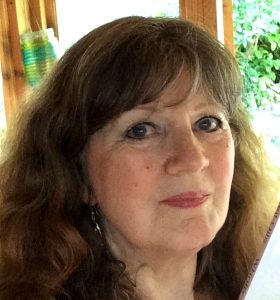

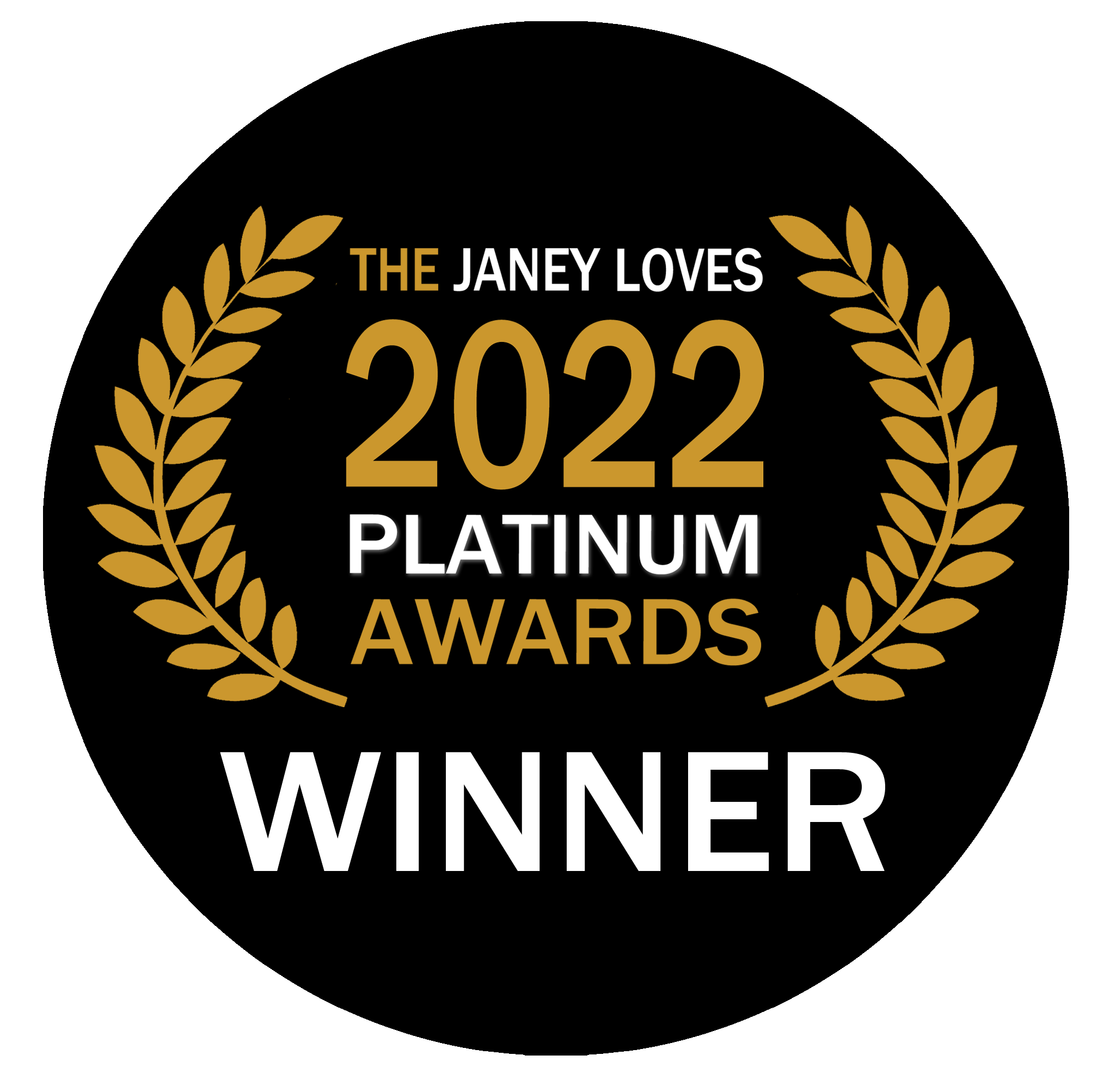



Ellen Kamhi Ph.D., RN, AHN-BC, RH(AHG), The Natural Nurse® has been involved in Natural Medicine since 1973, when she directed a program in Ethnobotany at Cochise College in Douglas, Arizona. Dr. Kamhi attended Rutgers and Cornell Universities. She sat on the Panel of Traditional Medicine at Columbia Presbyterian Medical School and is a Medical School Instructor, teaching Botanical Pharmacology. She was nominated for the March of Dimes, Woman of Distinction 2004 and received the J.G Gallimore award for research in science.
Dr. Kamhi is a professional member of the American Herbalist Guild (AHG), and is nationally board certified as an Advanced Holistic Nurse (AHN-BC). Ellen Kamhi is the author of many books, including Cycles of Life, Herbs for Women, The Natural Guide to Great Sex, WEIGHT LOSS-the Alternative Medicine Definitive Guide. Additionally, she co-authored with Dr. Eugene Zampieron in The Natural Medicine Chest and Arthritis, The Alternative Medicine Definitive Guide. She hosts radio shows daily, including on Gary Nulls Progressive Radio Network. Furthermore, she is regularly quoted in numerous mainstream media including NewsMax, Marie Clare, Globe, Latina, Self, Woman’s World, Prevention, Cosmopolitan and Glamour.
She is on the Peer Review Editorial Board of several journals/organizations, including: Alternative Therapies in Health and Medicine, Natural Medicine Journal, Natural Standard Database.
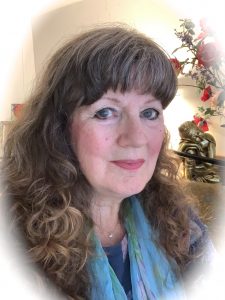
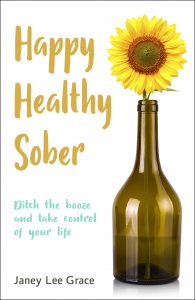 I am thrilled and honoured Janey asked me to contribute to her best selling new book, Happy Healthy Sober.
I am thrilled and honoured Janey asked me to contribute to her best selling new book, Happy Healthy Sober.
This is a lovely positive and upbeat book which explores ways to ‘ditch the booze’ and, in fact, other self-defeating habits we might cling to in order to ‘get through’.
Janey presents a candid overview of her own experience ‘ditching the booze’, sharing with the reader her struggles, but also, significantly, her incredible sense of liberation.
Janey reminds us that the locus of personal control is just one fulfilled intention away – that is, to value and love oneself. Taking control and exercising self-discipline is the ultimate paradox, the rewards are unimaginable; from the steel of resolve burst forth a multi-coloured fountain of possibility.
Shaking off the shackles of comforting, self-soothing habits, however, is not easy – the voice that insidiously whispers ‘just one more….’, ‘you’ve earned….’, ‘you deserve….’, ‘it helps me relax….’, ‘tomorrow…’, reassuring and conveniently persuasive.
But do not despair, Janey has this well covered (remember, she has been there too). Her thirty-day challenge, for example, supports the reader through the initial, often most challenging phase of sobriety. With her eye on the road ahead, she includes useful tips that cover all aspects of holistic wellbeing, from self-care, fitness, nutrition to mind-set and spirituality. There are tips from Sober Club members and contributions from health and wellbeing experts, including my section on the benefits of essential oils! Sobriety, after all, is a way of life, and, far from being restrictive and denying, is enlivening, even fun, as you will discover when you dive into Janey’s book.
Ditching the booze or not, this book offers invaluable insight and support that can be used to aid navigation through these very unusual and challenging times – for example, substitute the word ‘booze’ for any ‘addiction’ or self-comforting or compensatory habit, or simply absorb the words of wisdom and advice of a fellow ‘traveller’ finding her path through the challenges and the ‘up’s’ and ‘downs’ of life.
Heather Dawn: Godfrey. P.G.C.E., B.Sc. (Joint Hon)
Based in San Antonio, Texas, USA, radio hosts Marc and Nikki share their special interest in promotion of natural medicine and the significant role plants play in managing and maintaining health and wellbeing.
I was delighted to be invited as a guest to discuss with Marc and Nikki the many ways of applying the qualities of essential oils safely and effectively. We talk about both topical and internal application and explore appropriate application and the boundaries of use, and discuss the wonderful effectiveness of essential oils when they are applied diligently, focusing particularly on their anti-microbial and skin restorative and regenerative, and psycho-emotional properties.
The interview begins 10 minutes in to the show.
 Click here to listen to the interview
Click here to listen to the interview
Click here for more information about Marc and Nikki and their radio show
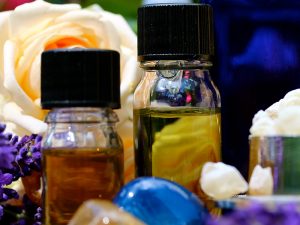 Click here for more information about how to apply and store essential oils safely
Click here for more information about how to apply and store essential oils safely
Click here for more information about what is an essential oil